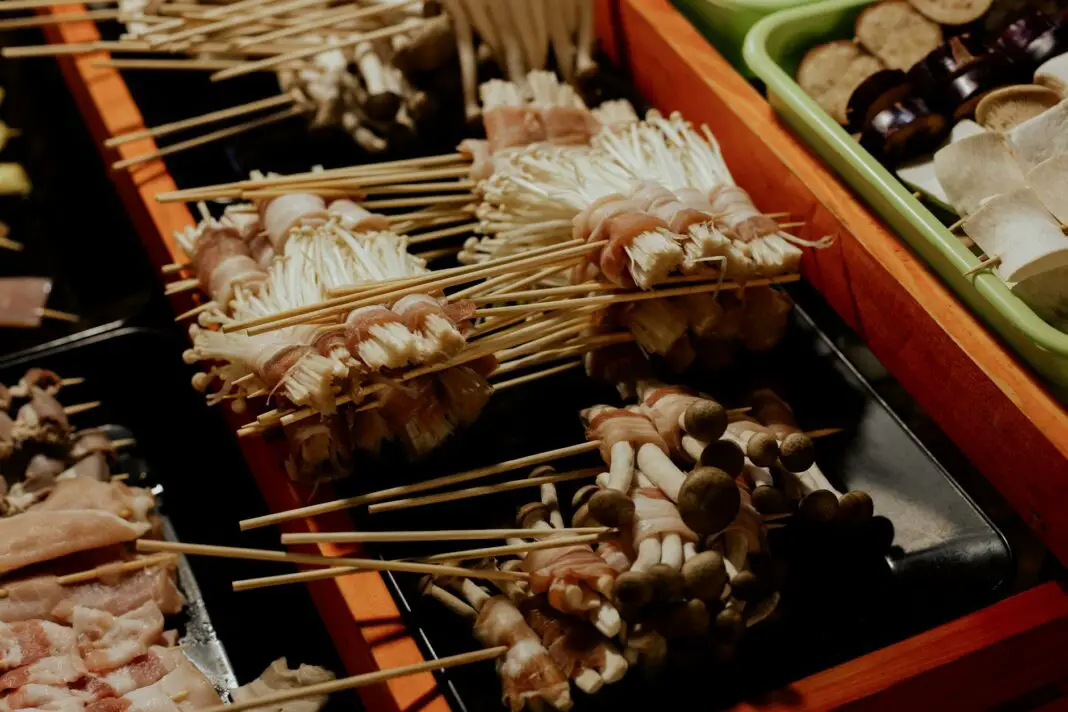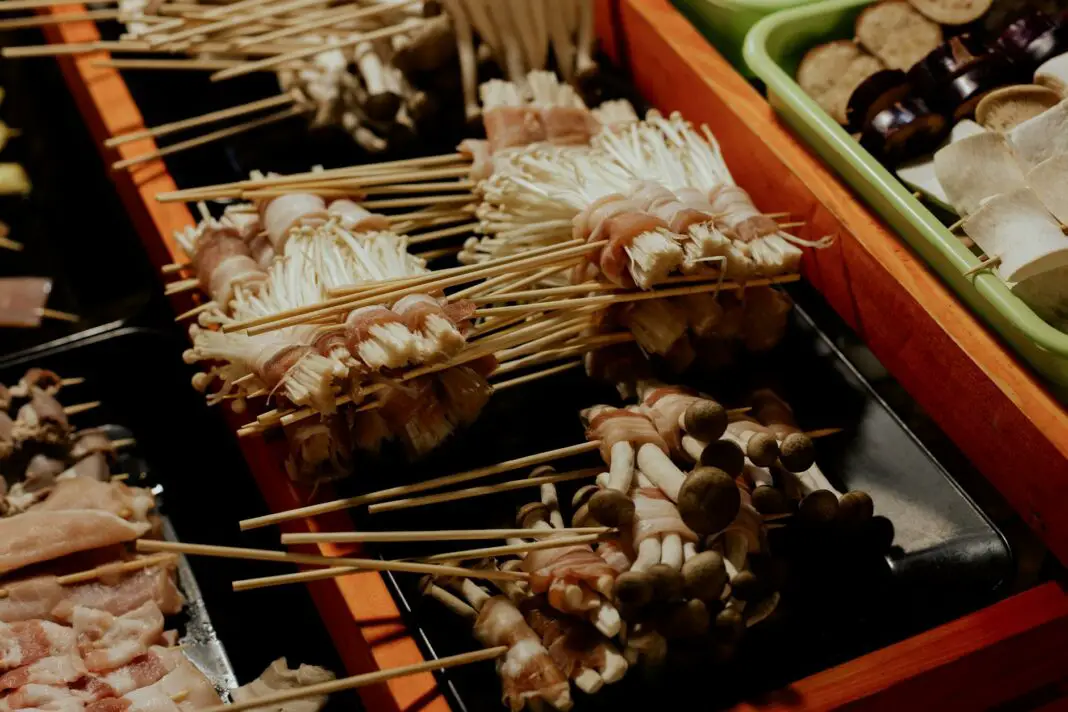Introduction
Embarking on a trip to Thailand offers a delightful journey through vibrant markets overflowing with fresh produce and unique local ingredients, ideal for crafting your next culinary feast. The landscape of Thai cuisine is rich and varied, presenting endless possibilities to experiment with flavors and techniques unparalleled in the culinary world. Dive into this blog post to uncover the best local ingredients that make Thailand a paradise for food enthusiasts and home chefs alike.
As you traverse the bustling streets and serene countryside, you’ll discover an array of aromatic spices, exotic fruits, and fresh herbs that hold the secrets to authentic Thai cooking. Whether you’re planning a visit to the Land of Smiles or simply looking to add some excitement to your kitchen, this guide promises to give you valuable insights into Thai ingredients and how they can elevate your culinary creations.
Table of Contents
- 1. Fresh Herbs: The Essence of Thai Flavor
- 2. Exotic Spices: A Symphony of Tastes
- 3. Vibrant Vegetables: Nature’s Palette
- 4. Unique Fruits: The Sweet Side of Thailand
- 5. Mastering Thai Fish Sauce: Umami Unleashed
- 6. Cooking Tips: Using Local Ingredients
- 7. Thai Food Markets: A Culinary Adventure
- FAQ
1. Fresh Herbs: The Essence of Thai Flavor
Fresh herbs are fundamental to authentic Thai cuisine, creating a vibrant flavor that leaves a lasting impression. Among the most cherished herbs is cilantro, often used in salads and as a garnish to enhance the taste of various dishes. Then there’s Thai basil, which boasts a distinctive flavor profile that includes hints of anise and pepper, making it perfect for curries and stir-fries. Don’t overlook lemongrass either; this aromatic herb offers a refreshing taste that brightens up any recipe.
In local Thai markets, the air is filled with enticing aromas from these herbs, heightening your senses and sparking creativity. When sourcing fresh herbs, look for those that are vibrant and fragrant, as they’ve been picked at their peak freshness, ensuring optimal flavor for your meals. As you explore these herbs, consider how they can be layered through multiple dishes, enhancing each one with unique bright notes that will transport your taste buds straight to Thailand, giving you an authentic culinary experience.
2. Exotic Spices: A Symphony of Tastes
Thailand’s array of spices forms the backbone of its rich culinary heritage. Key spices include chili peppers, which dictate the dish’s heat level and are often found in red and green curry pastes, tamarind for its tangy depth, and the fragrant cardamom, which adds a subtle sweetness that balances many savory options. The remarkable variety of spices found in Thailand means that every dish tells its own delicious story.
Experimenting with these spices is not just about following a recipe; it’s about embracing the natural interplay of flavors. Imagine incorporating toasted coriander seeds or a sprinkle of white pepper to create complexity in flavor. When you truly understand how spices complement each other, you set the stage for culinary masterpieces that can surprise your guests or simply treat your family to a delightful meal. Embrace the culinary adventure that spices bring, and let them take you deeper into Thailand’s cooking traditions.
3. Vibrant Vegetables: Nature’s Palette
Thailand’s markets burst with color, showcasing a stunning variety of vegetables that are as nutritious as they are beautiful. From crisp green beans to crunchy Thai eggplants, every vegetable contributes a unique texture and flavor that makes dishes vibrant. These ingredients not only enhance the visual appeal of your plate but also provide a nutritional powerhouse that can balance rich flavors in Thai cuisine.
When selecting vegetables, opt for seasonal produce as they hold the richest flavors and nutrients. Learning to incorporate these ingredients creatively will allow you to recreate authentic flavors at home. Picture vibrant red bell peppers paired with fresh herbs and a touch of lime juice, creating a light salad that captures the essence of Thai summer. With the right vegetables, you can elevate everyday meals into delightful feasts.
4. Unique Fruits: The Sweet Side of Thailand
Exploring Thailand’s fruits is akin to entering a candy store filled with exotic sweet treats. From the famous mango, known for its lusciousness, to the less common yet fascinating durian, often referred to as the king of fruits, the choices are endless. Mangosteen and rambutan add not only sweetness but also an intriguing texture that can be the highlight of any dessert or snack.
These fruits can be utilized in both sweet dishes and savory salads, merging unexpected flavors delightfully. Imagine crafting a refreshing mango salad that balances sweet-tart notes with a hint of spice; this creativity showcases how fruits can elevate your culinary repertoire. By exploring these unique fruits, you’ll inspire yourself to create new dishes that impress and excite everyone at your table.
5. Mastering Thai Fish Sauce: Umami Unleashed
Fish sauce is an essential ingredient in Thai cuisine, deeply cherished for its ability to impart umami—often making or breaking various dishes. This liquid gold is derived from fermented fish and adds complexity to curries, dressings, and marinades. The rich, savory flavor is what makes Thai food so distinctive; it’s often used in a balance with sugar and lime to create a harmonious flavor profile.
To harness the full potential of fish sauce in your culinary creations, focus on quality. Not all fish sauces are created equal—an artisanal, long-fermented variety can drastically improve the taste of your dishes. Mastering its use may involve a careful touch for both balance and depth, ensuring flavors are well-rounded and satisfying. By embracing this key ingredient, you can elevate your Thai cooking and impress your guests with authentic, flavorful meals that boast depth and character.
6. Cooking Tips: Using Local Ingredients
Utilizing local ingredients in your cooking is about understanding seasonality and the freshest produce available. Always choose herbs, spices, and vegetables that are currently in season for the best results. Additionally, experimenting with different combinations of ingredients can lead to discovering new favorite dishes.
To refine your techniques, consider exploring traditional Thai cooking methods such as using a mortar and pestle to create your curry pastes or grilling meats over an open flame which infuses flavors deeply. Incorporating unique local ingredients, such as rotting chicken or crispy shallots, can enhance textures and flavors, providing unexpected delights. This exploration of local practices and ingredients makes cooking a dynamic journey full of surprises.
7. Thai Food Markets: A Culinary Adventure
Immerse yourself in the bustling atmosphere of Thai food markets, where everything feels alive with flavor. Vendors display their fresh produce with such pride and enthusiasm that it’s impossible not to be drawn in. Visiting these markets provides the perfect opportunity to learn about local ingredients directly from the suppliers and embrace the community spirit that defines Thai culture.
Navigating these markets can be an adventure in itself; sampling street food, gathering new recipes, and engaging with the local population adds to the richness of your experience. By making the effort to explore these vibrant settings, you’ll not only find the freshest ingredients but also gain inspiration for your own cooking. This deepened connection with the food culture adds layers of joy to your culinary journey.
Embark on Your Thai Culinary Journey
The world of Thai cuisine is more than just food—it’s a celebration of freshness, color, and vibrant flavors that come together beautifully. From selecting fresh herbs and exotic spices to mastering traditional techniques, this culinary adventure is one that creates indelible memories in your kitchen. With every ingredient you use, you are taking a step closer to not just cooking, but creating an experience that tantalizes the taste buds and showcases the soulful essence of Thailand.
FAQ
What are the must-try local dishes in Thailand?
Some of the must-try dishes include Pad Thai, Tom Yum Goong (spicy shrimp soup), som tum (green papaya salad), and Massaman curry. These dishes encapsulate the diverse flavors of Thai cuisine.
How can I incorporate Thai ingredients into Western dishes?
You can add Thai ingredients like fish sauce, lemongrass, or cilantro to Western recipes for an exciting twist. For example, use fish sauce in marinades or lemongrass in seafood dishes to create a fusion of flavors.
Where can I find Thai ingredients outside of Thailand?
Local Asian markets or specialty grocery stores often carry a range of Thai ingredients. Additionally, online retailers specifically focusing on Asian cuisine can provide access to hard-to-find items.
What is the significance of balance in Thai cuisine?
Balance is pivotal in Thai cuisine, where each dish harmonizes sweet, sour, salty, and spicy elements, creating a nuanced flavor profile. This balance is essential for achieving the signature taste of Thai food.
Image Credit: Pexels





